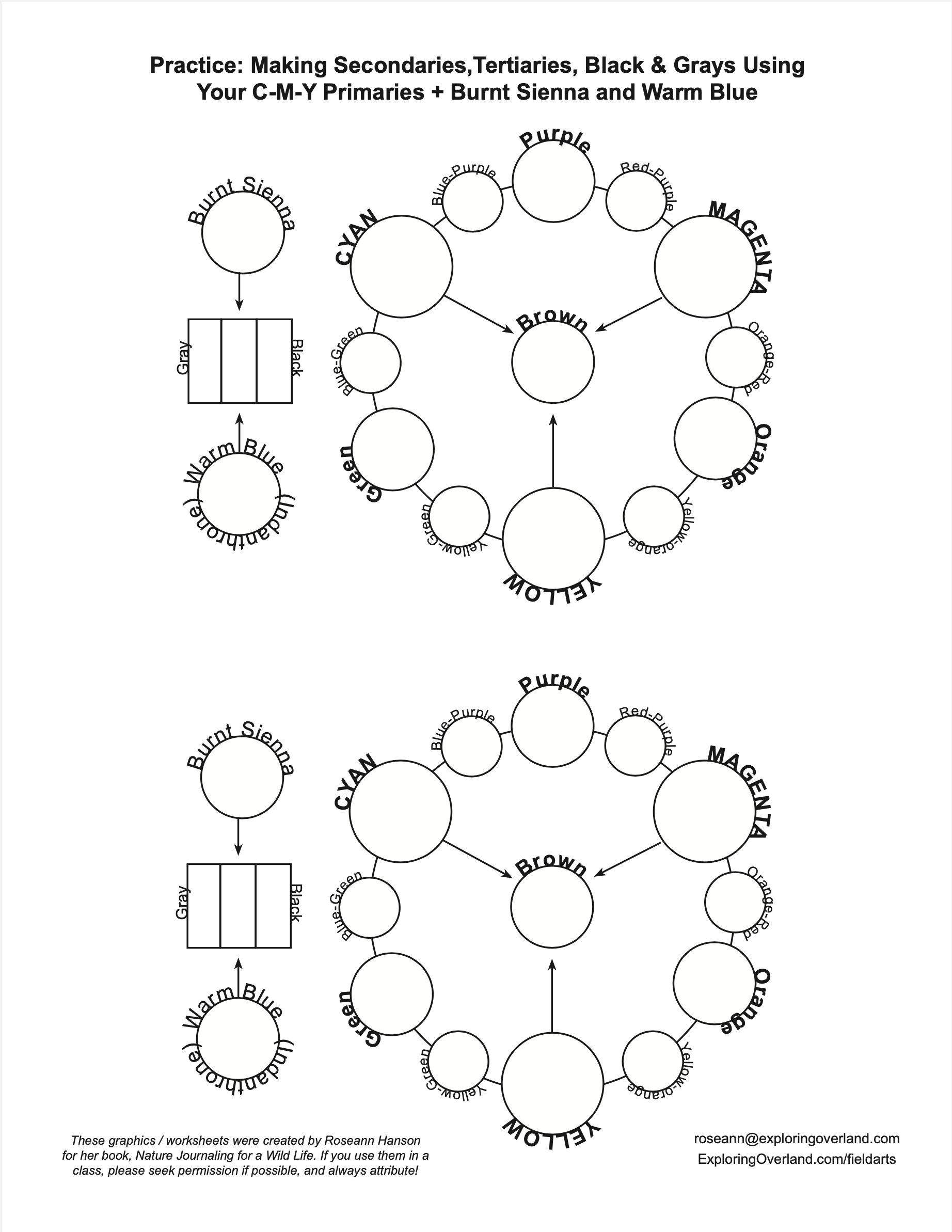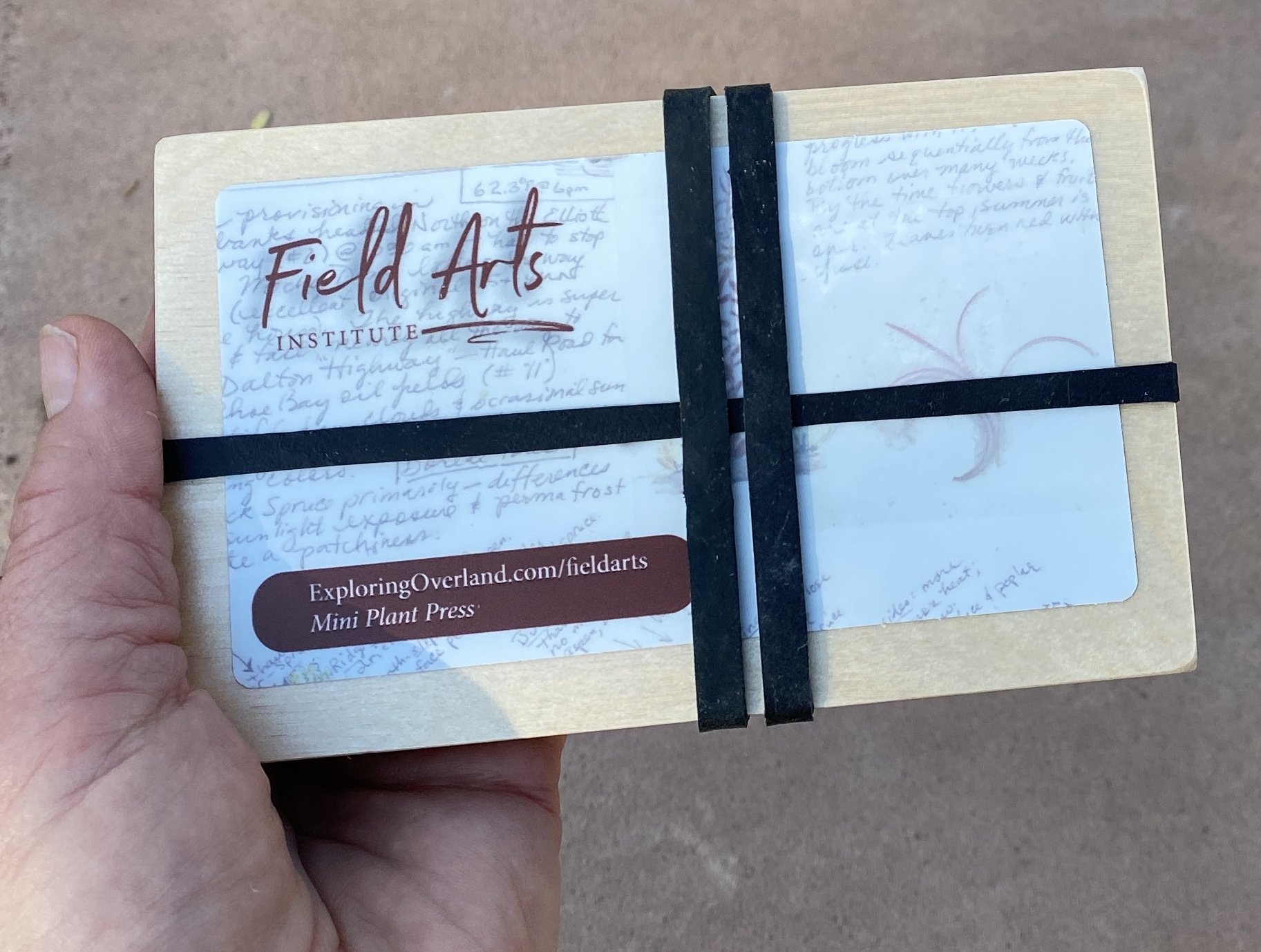Quickly Capture (and add color to) Complex Subjects
Zoom workshop-demonstration on field sketching and nature journaling by Roseann Hanson (University of Arizona Desert Laboratory on Tumamoc Hill / ExploringOverland.com Field Arts Institute) and Ryan Petterson (Stanford University School of Earth Energy and Environmental Sciences).
Roseann and Ryan are both field scientists and naturalists, and keep field journals / nature journals with notes and sketches in pen, pencil, and watercolor.
----------------------------------------------------------
RESOURCES FOR THE WORKSHOP:
Ryan's Resources:
Tuolumne Meadows Virtual Tour Online (Ryan worked with site #36 and 47):
vrglaciers.wp.worc.ac.uk/tuolumne/tuolumne.html
Tuolumne Meadows screen shot for Ryan's landscape sketching demo:
dropbox.com/s/z9qjqolk09obgq2/Tuolumne%20Meadows%20demo%20sample.png?dl=0
----------------------------------------------------------
Roseann's Handouts:
dropbox.com/s/auslrgm69g6l6cn/MINIMALIST%20PAINTING.png?dl=0
dropbox.com/s/kt63w6gwq3ku06g/KEEP%20IT%20SIMPLE.png?dl=0
dropbox.com/s/3bohojulags4cqv/Workshop%20-%20Online%20-%20May%202020.pdf?dl=0
----------------------------------------------------------
Online resources:
John Muir Laws' Nature Journal Club:
facebook.com/groups/naturejournalclub/
----------------------------------------------------------
Books:
Nature Journaling for a Wild Life by Roseann Hanson
Available at ExploringOverland.com through our Field Arts Institute:
exploringoverland.com/field-arts-intro
Laws Guide to Nature Drawing and Journaling:
----------------------------------------------------------
Follow us on IG:
@roseannhanson @desert.laboratory @ry_pett @stanfordearth
Facebook/roseannhansonexplore
#fieldarts #sketching #naturejournal #watercolor @swarovskioptik_nature #swarovskioptik_nature
Minimalist Watercolor for Nature Journaling
If you are new to watercoloring in your nature journal or field notes—or to using a waterbrush instead of a traditional brush—here is a short tutorial on using a minimalist approach, using just five colors (a cyan-magenta-yellow triad + burnt sienna and a dark blue) from my Minimalist Paint Kit. My workbook, Nature Journaling for a Wild Life, includes a section on how to start using simple colors and which ones are easiest to use and why. I use transparent, non-staining ("liftable") colors from Daniel Smith: Cerulean or Manganese Blue Hue (="cyan"), Quinacridone Rose (="magenta”), and Aureolin (="yellow”) plus Burnt Sienna and Indanthrone Blue.
Below is a link for a downloadable PDF of my Minimalist Watercolor Worksheets.
Triad + 2 color Minimalist Watercolor Technique – Printable color mixing practice sheets
Click HERE to download a PDF. Tip: if you have 8 1/2 x 11 watercolor paper that is 90-lb or lighter, you can print on a laser printer (not an inkjet, which will smear).
Fellow teachers: If you use my PDF in a class, please make sure to include the attribution for my work; I created these resources for my book and for my classes, and I appreciate the attribution!







